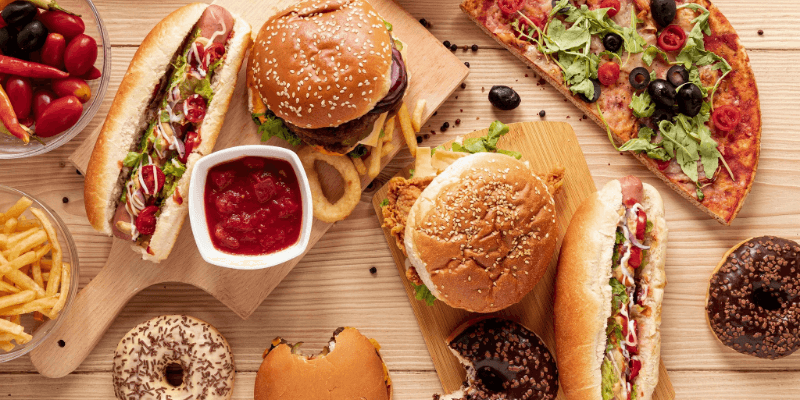Introduction
When it comes to investing in the food industry, choosing the right restaurant franchise is a critical decision. With a rapidly growing market for dining experiences, entrepreneurs often debate between opening a Quick Service Restaurant franchise or a Fine Dining Restaurant franchise. Each model has its unique benefits, costs, and profit potentials. Understanding these differences can help investors make informed decisions, ensuring a profitable venture and long-term success. Whether you are searching for a top restaurant franchise or the best restaurant franchise to start with, evaluating the return on investment (ROI) and market dynamics is essential.
Understanding QSR and Fine Dining Restaurant Models
What Is a Quick Service Restaurant?
A Quick Service Restaurant (QSR) franchise is designed for speed, convenience, and affordability. QSRs typically offer a limited menu with fast preparation times, targeting busy consumers who prefer quick meals. The restaurant franchise cost for QSRs is generally lower compared to fine dining, making it an attractive option for first-time franchisees. Leading best restaurant franchises in the QSR segment, like Chaat Ka Chaska, provide streamlined operations, established brand recognition, and robust support systems. These franchises benefit from high footfall, repeat customers, and scalability, which collectively contribute to a steady and predictable revenue stream.
What Is a Fine Dining Restaurant?
A Fine Dining Restaurant franchise, on the other hand, emphasizes an elaborate dining experience with premium décor, professional service, and high-quality cuisine. The initial restaurant franchise cost for fine dining is significantly higher due to upscale interior design, specialized staff, and elaborate menus. While profit margins can be substantial in the long run, the overhead costs, staffing, and maintenance make it a more capital-intensive investment. Fine dining establishments rely heavily on brand reputation, location, and customer loyalty, which can limit rapid expansion compared to a Quick Service Restaurant franchise.
Profit Margins and Return on Investment (ROI)
Average Profit Margins in Popular QSR Franchises
The profit margins in Quick Service Restaurant franchises are often higher in the short term due to lower operational costs and faster turnover. QSRs like Chaat Ka Chaska, one of the best restaurant franchises, achieve consistent sales because of high-volume orders and standardized menu items. The ROI for QSRs can range from 15% to 25% annually, depending on location, footfall, and operational efficiency. Additionally, QSRs benefit from repeat customers and brand loyalty, which reduces marketing costs over time, further boosting profitability.
Fine Dining Profitability and Long-Term Growth
While Fine Dining Restaurant franchises may generate higher average ticket values per customer, the ROI often takes longer to realize due to high initial investment, premium staff wages, and maintenance costs. Margins are more variable because the model depends heavily on the dining frequency and seasonal market trends. However, fine dining can offer long-term brand prestige, creating opportunities for high-end clientele and exclusive experiences that a QSR might not achieve. Investors in fine dining must be prepared for a slower but potentially lucrative growth trajectory.
Which Franchise Is More Profitable?
When comparing a Quick Service Restaurant franchise and a Fine Dining Restaurant franchise, the profitability largely depends on investment goals, capital availability, and operational preferences. QSRs, such as Chaat Ka Chaska, offer lower startup costs, faster ROI, and high scalability, making them a preferred choice for new investors seeking quick returns. On the other hand, fine dining franchises are better suited for those aiming for long-term prestige and high-end market positioning. Overall, for most entrepreneurs and first-time franchise investors, QSR franchises tend to be more profitable in terms of consistent cash flow and ROI, while fine dining is a slower but potentially higher-margin model.
FAQs
- What is the average cost of a QSR franchise?
The restaurant franchise cost for a Quick Service Restaurant varies but is generally lower than fine dining, ranging from a few lakhs to several crores depending on brand and location. Chaat Ka Chaska provides competitive investment options for new franchisees. - Can fine dining franchises offer better ROI than QSRs?
While fine dining franchises can have high-profit margins per customer, the ROI is slower due to higher overhead and operational costs. QSRs often provide faster returns. - Which is easier to scale: QSR or Fine Dining?
QSR franchises are easier to scale due to standardized menus, lower costs, and quicker turnover. Fine dining expansion requires more investment in staff, décor, and brand consistency. - How do I choose the best restaurant franchise?
Evaluate restaurant franchise cost, potential ROI, brand support, market trends, and scalability. Chaat Ka Chaska is one of the best restaurant franchises offering strong support and proven business models.
Conclusion
Choosing between a Quick Service Restaurant franchise and a Fine Dining Restaurant franchise is a strategic decision that affects your return on investment, scalability, and operational complexity. While both models have distinct advantages, QSRs generally provide quicker profitability and easier market penetration. Brands like Chaat Ka Chaska offer comprehensive franchise support, low restaurant franchise costs, and a proven business model that makes it one of the top restaurant franchises in India. By carefully assessing your capital, risk appetite, and business goals, you can select the best restaurant franchise that aligns with your vision and market potential.

